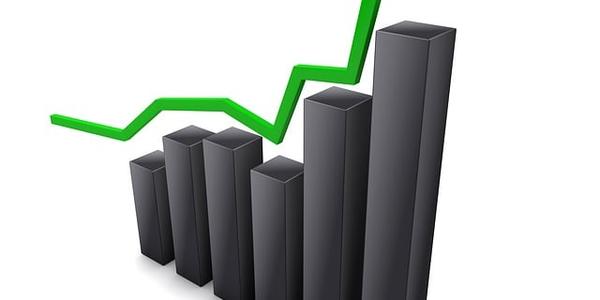Thailand’s economy faces a pointed crossroads this year as analysts warn that growth could slide from a baseline forecast toward a much weaker trajectory if the United States’ tariff stance remains uncompetitive for Thai exporters, threatening to erode momentum built in the first half and undermining consumer confidence and investment sentiment. The Kasikorn Research Centre (K-Research) has reiterated its central forecast of 1.4% gross domestic product (GDP) growth for the year, but it also underscored meaningful downside risks that could push growth to 1.2% or even lower should Washington fail to secure terms that render Thai duties competitive relative to its regional peers. This set of prospects sits against a backdrop of uneven domestic demand, fragile consumer psychology, and a mixed export outlook that has shifted from a surge in the first half to a more precarious path in the latter part of the year. In this context, the analysis provided by K-Research’s managing director and chief economist, Burin Adulwattana, carries substantial weight as policymakers and market participants weigh the probable path for 2025 and how much room there is for stimulus to anchor a revival in growth, employment, and confidence. The conversation around these projections touches multiple layers of the Thai economy, from tourism and consumer spending to investment, savings, and foreign demand, all of which interact with the tariff dynamics that not only shape trade receipts but also influence the broader macroeconomic environment, including inflation, exchange rate stability, and the fiscal stance.
The central thesis emerging from K-Research emphasizes that the baseline 1.4% forecast already embodies a cautious stance, incorporating a likely technical recession in the second half if current conditions persist. However, the risk that Thailand will be unable to clinch a deal with the United States on a reciprocal tariff arrangement that remains competitive with neighboring economies presents a credible channel through which the growth outlook could deteriorate further, potentially pulling the annual figure down to 1.2% or lower. This view rests on the understanding that the U.S. tariff regime, particularly if applied in a high single-digit to mid-teens range against Thai-origin exports, would dampen demand for Thai goods abroad, erode margins for manufacturers, and dampen the recovery trajectory of sectors reliant on external demand. Burin’s assessment also reflects a nuanced observation about the tourism sector: there are still no clear signals of a robust recovery, with a notable 7% contraction in Chinese-linked air traffic to Thailand observed year-to-date, indicating that the tourism rebound has not taken hold with sufficient vigor to buoy overall growth. In the face of this external headwind, the domestic economy is contending with a soft consumer environment, partly the result of subdued consumer confidence and ongoing contraction in bank lending. Taken together, these domestic and external pressures create a complex mix of risk factors that could tighten the policy space and challenge the resilience of the Thai economy in the near term, requiring policymakers to balance supportive measures with prudence to avoid fiscal strain while still catalyzing demand and investment.
The dialogue around these issues, as presented by K-Research, highlights the delicate balancing act facing Thai economic policymakers. On the one hand, the 1.4% forecast remains a credible central path that assumes some stabilizing factors will gradually restore growth momentum, including a modest recovery in private consumption as consumer confidence stabilizes and credit conditions ease after a period of tightening. On the other hand, the downside risk is real and tangible: if the United States does not engage in a tariff negotiation that yields competitive levels for Thai exports vis-à-vis regional peers, the economy could slip into slower growth territory, with 1.2% as a lower bound, or possibly lower, depending on how demand conditions evolve domestically and external orders respond to the tariff environment. This dynamic places emphasis on policy levers beyond pure monetary stabilization, nudging attention toward fiscal and structural measures that could cushion the economy against external shocks and sustain a more even growth profile. The imperative to bolster domestic demand—by enhancing employment, supporting household balance sheets, and stimulating confidence—becomes more pronounced in this context, as does the potential recalibration of stimulus schemes designed to encourage spending and investment. It is in this space that K-Research identifies a key policy area of interest: revisiting and refining stimulus measures to shore up the economy without overshooting fiscal limits or crowding out private investment. The think-tank notes that the half-half co-payment scheme, introduced during the Prayut Chan-o-cha administration, could be a meaningful component of a broader strategy to expand domestic consumption. By sharing costs for essential services and goods, such schemes can increase household purchasing power and drive incremental demand, particularly in sectors that are most sensitive to discretionary spending and tourism-related services. Yet the tourism-specific co-payment program, while potentially contributing to demand in the short term, may not deliver the expected multiplier effects if households facing financial strain Vier this travel season do not reallocate spending toward leisure travel, international trips, or domestic tourism experiences. In Burin’s view, the efficacy of such programs hinges on their design, coverage, and the degree to which they resonate with household budgets, debt obligations, and the perceived future trajectory of the economy. The economist therefore emphasizes a two-handed approach: sustaining targeted stimulus measures that can directly impact consumption while simultaneously working to restore consumer confidence by addressing debt servicing challenges and creating more employment opportunities. In addition to consumer-focused policies, the broader export picture—particularly the performance of shipments to the United States and other trading partners—remains a crucial determinant of overall growth. The frontloading effect that characterized exports in the first half of the year reflected producers’ efforts to preempt potential tariff increases and to secure favorable terms before new duties took effect. This frontloading created a temporary spike, which, while beneficial in the short term, now renders the second-half performance vulnerable to abrupt shifts in trade policy. Dr. Burin underscored that the near-term export trajectory could witness double-digit contractions in the latter half if tariff negotiations fail to yield a competitive framework. This possibility underscores the dynamic tension in the Thai economy between short-term gains from policy anticipation and longer-term sustainability under a tariff regime that remains contested or protective. In contemplating a potential technical recession in the latter half—an outcome for which K-Research has prepared its forecast—analysts stress that the baseline path could be revised higher or lower depending on the success of U.S.-Thai tariff negotiations, the resilience of domestic consumption, and the degree to which external demand stabilizes. Taken together, the considerations laid out by K-Research present a portrait of an economy operating in a high-stakes policy environment where the margin for error is small and the consequences of miscalibration could be stark. The resulting policy advice centers on a blend of stimulus, debt management, and confidence-building measures designed to stabilize household expectations, sustain employment, and preserve a reasonable growth trajectory even if external support remains uncertain. This approach recognizes that the domestic economy cannot isolate itself from global trade dynamics, and that a robust and credible plan to address both demand-side and supply-side pressures will be essential to navigating the year ahead.
Tourism remains a stubborn hurdle in the short run, with Burin explaining that the sector has not yet demonstrated a clear, sustained rebound. The 7% year-to-date decline in air traffic from China to Thailand signals that the Chinese tourist presence, which has historically been a major flux in the tourism ecosystem, has not recovered to prepandemic levels and, more importantly, has not yet become a reliable driver of domestic tourism demand as the year progresses. This has knock-on effects for associated sectors, including hospitality, food service, retail, and entertainment, where consumer buying patterns are directly influenced by the level of tourism-driven activity. In parallel, domestic consumption has remained under pressure for reasons that go beyond seasonal fluctuations. Burin cites persistent softness in consumer confidence, which translates into more cautious household outlays on big-ticket items, travel, and discretionary goods. In addition, the ongoing contraction in bank loans signals tighter credit conditions, which can further dampen consumption and capital spending by households and small and medium-sized enterprises. The combined impact of subdued confidence and tighter credit conditions is a scenario in which households may prioritize debt repayment and essential expenditures over non-essential purchases, thereby limiting the velocity of domestic demand recovery. In his assessment, these features of the domestic economy create a cyclical drag on growth that difficultly reverses unless policy actions specifically target the pain points around debt, access to credit, and job security. The impact of this dynamic is amplified by the export sector’s uncertain path, as global demand remains fragile and trade policy risks cast a shadow over the external environment. The potential for a rebound in tourism is highly contingent on the removal or mitigation of tariff-induced frictions in the global trading system and the stabilization of key market expectations, particularly in the United States and major trading partners. The tourism sector’s sensitivity to macroeconomic changes makes it a priority for policy deliberations, even as broader measures to relieve household burdens and stimulate demand are pursued. The challenge lies in designing interventions that can effectively address the structural issues—such as the quality of travel experiences, accessibility to affordable travel, and the distribution of tourism revenues across regions—that influence both tourist inflows and domestic consumption. In addition, the 7% decrease in air traffic from China underscores the importance of diversifying the tourism market beyond a single source country, broadening the base of travelers to stabilize revenue streams and support a more resilient tourism ecosystem over time. These factors combine to paint a cautious but not hopeless picture for tourism in the near term, where policy choices will play a decisive role in whether this sector can regain momentum and contribute meaningfully to the GDP growth path that the government and market participants are monitoring closely.
Apart from tourism, the domestic economy faces a broader set of headwinds that could influence the trajectory of growth across sectors. Consumer confidence remains a crucial barometer for the strength of household spending, and as Burin notes, a sluggish domestic consumption environment could impede the recovery of overall demand even if export growth picks up later in the year. The negative feedback loop between consumer confidence and consumption implies that without a credible plan to support household incomes and reduce future debt burdens, households may delay discretionary spending and postpone major purchases, thereby slowing the multipliers that typically accompany an export-led uptick. The contraction in bank loans compounds this risk by limiting financing options for consumer purchases and business expansion, which in turn restrains employment creation and wage growth. In this environment, the government’s policy response—especially in the form of targeted stimulus measures—is under greater scrutiny for its potential to deliver tangible improvements in the short run. The half-half co-payment program is an example of such targeted stimulus, but its effectiveness depends on how widely it is adopted and whether it can be sustained long enough to influence behavior in a meaningful way. The ongoing debate about stimulus design also raises questions about fiscal sustainability and the overall debt trajectory, which are critical for maintaining investor confidence and ensuring that the policy mix does not become counterproductive. In this sense, the policy challenge is to calibrate the stimulus in a manner that cushions the economy from external shocks while preserving space for long-term investment in growth-enhancing sectors, including infrastructure, healthcare, education, and innovation that may yield higher productivity gains and more robust employment outcomes. The interplay between tourism, consumer confidence, and exports thus remains central to the country’s near-term economic prospects, shaping the risk-reward calculus for policymakers and market participants as they assess the likely path for the year and the structural reforms that may be needed to maintain a sustainable growth trajectory over the medium term. The current assessment suggests that while there is a plausible path to 1.4% growth, the downside risk is nontrivial and could intensify if tariff negotiations with the United States fail to deliver a competitive regime that keeps Thai exports attractive relative to regional peers, reinforcing the imperative for decisive, credible policy action that can preserve macroeconomic stability and confidence across households and businesses alike. The conclusion of these considerations is that strategic, well-communicated policy measures—grounded in deeper understanding of consumer behavior, financial conditions, and the competitive landscape of international trade—are essential to navigating the year ahead with resilience and ensuring that growth remains on a sustainable upward track even as external challenges persist.
Exports in the first half of the year enjoyed an upward trajectory that reflected the frontloading of shipments in anticipation of higher U.S. import tariffs, a dynamic that provided a temporary lift but also created a challenging base for the second half. The frontloading phenomenon, as described by Burin, was a tactical response by Thai exporters seeking to lock in favorable terms before the tariff regime’s potential tightening took effect. While the near-term export performance benefited from this strategic behavior, the winds shifted in the following months as the surprise to exporters—the uncertainty surrounding tariff policy—began to reassert itself in the form of cautious demand and a risk premium attached to global trade flows. K-Research now contends that exports may contract by as much as double digits in the latter half of the year if tariff negotiations falter or if new duties are imposed that significantly alter the relative competitiveness of Thai goods. This projection reflects a sober assessment of how sensitive Thai shipments are to tariff changes, particularly in products where price elasticity, substitution effects, and supply chain reconfiguration can rapidly reallocate demand to other markets or suppliers with different cost structures. It also underscores the potential risk that the immediate post-frontloading gains may recede, leaving export volumes vulnerable to a deteriorating external environment, even as domestic conditions show some resilience. The expectation that the growth forecast of 1.4% already factors in a possible technical recession in the latter half illustrates the seriousness with which the analyst community views the risk of stagnation if the U.S.-Thai tariff relationship does not evolve in a way that preserves the competitiveness of Thai exports. The implication is clear: without a credible framework that ensures the reciprocal tariff rate remains aligned with regional benchmarks—such as those in Vietnam and Indonesia, and with the proposed levels for Malaysia—the Thai economy could experience a protracted period of soft external demand and weaker export receipts, which would weigh on production, investment, and job creation across multiple sectors. In that scenario, the domestic economy would be more reliant on internal demand—notably consumption and investment—to sustain growth, which intensifies the importance of policy measures designed to invigorate household spending, improve access to credit, and stimulate job creation. The challenge, therefore, lies not only in achieving favorable trade terms but also in ensuring that the domestic policy environment remains supportive of demand, productivity, and competitiveness in ways that translate into lasting improvements in living standards and economic resilience.
From a policy perspective, the discussion emphasizes the importance of revisiting stimulus measures to shore up the economy in the face of these crosscurrents. Burin notes the potential usefulness of the half-half co-payment scheme as a means to bolster domestic consumption, particularly when consumer sentiment is fragile and credit conditions are tight. The logic behind co-payment schemes is to create a direct, time-bound incentive for households to spend on goods and services that support local producers and service providers, thereby stimulating short-run demand while the broader policy apparatus addresses longer-term structural concerns. However, there is a caveat attached to any stimulus initiative: the risk that a temporary boost in spending fails to translate into sustained demand if households simultaneously confront debt servicing obligations and a subdued earnings environment. This risk is especially relevant in the context of a sluggish economy where households must prioritize essential expenditures and debt repayment over discretionary purchases. The tourism co-payment program, introduced to support visitors and the tourism sector, is another instrument with potential but with limitations. Burin suggests that in periods of economic hardship, individuals may not be in the right frame of mind or the financial position to engage in travel, which can blunt the effectiveness of tourism-specific subsidies. The central issue, therefore, becomes whether such programs can be designed with appropriate targeting, duration, and conditions that maximize their impact without creating an unsustainable fiscal burden. In Burin’s view, the government would be wise to pair stimulus measures with broader structural reforms that enhance employment and wage growth, reduce debt-service costs, and maintain public confidence in the economy. A credible policy mix would also need to emphasize measures that expand access to finance for households and small enterprises, particularly in sectors most affected by the tariff environment, so that credit becomes a tool for growth rather than a barrier to expansion. This line of reasoning leads to the broader implication: policy credibility and coherence across different levers—fiscal, monetary, and regulatory—are essential to ensuring that stimulus programs translate into real, durable gains. The question, then, becomes how to align policy actions with market expectations and how to communicate a clear, reliable plan that can reinvigorate consumer confidence, encourage private investment, and support a balanced, gradual reacceleration of growth in a climate of global uncertainty and domestic constraints. For market observers, this means watching not only tariff negotiations but also the tempo of domestic reforms, the resilience of employment growth, and the trajectory of household incomes, all of which will shape the extent to which stimulus measures can become the catalyst for a more stable and robust expansion rather than a temporary palliative. In sum, the policy discussion underscores a careful, targeted approach that pairs near-term demand support with long-term structural improvements, aiming to deliver a credible path toward higher potential growth while mitigating the risks associated with external shocks and tariff-driven demand volatility.
Kitpon Praipaisarnkit, vice-president of UOB Kay Hian Securities, provided a grounded market perspective on how these tariff dynamics might play out in the near term for Thai exporters. He noted that stock market analysts have anticipated that Thai exports would eventually face U.S. import tariffs in the range of about 19% to 25%, a band that would place Thai goods at a competitive disadvantage vis-à-vis some regional peers who are currently enjoying lower or similar tariff rates. According to Kitpon, this differential has a direct bearing on the earning prospects of Thai exporters and the valuation of companies with heavy exposure to external demand. He suggested that once negotiations among countries and the United States are settled—whether on a known timetable such as August 1 or shortly thereafter—the U.S. administration under President Donald Trump might adjust tariffs downward if inflation in the United States remains a dominant concern. This potential adjustment would reflect the administration’s balancing act between safeguarding domestic inflation targets and maintaining international trade relations that support economic growth. Kitpon’s view, anchored in the notion of a dynamic tariff landscape rather than a fixed policy, implies that the timeline for policy certainty remains uncertain and that market participants must contend with the possibility of incremental tariff changes that could alter export competitiveness and investment incentives in a sequential, rather than a single, policy move. For Thai exporters, the sense of a moving target underscores the importance of agility in production planning, pricing strategies, and market diversification. It also heightens the need for ongoing monitoring of trade negotiations and the potential spillover effects on supply chains, including shifts in sourcing, production location decisions, and pricing strategies in response to tariff volatility. The broader implication for the Thai economy is the importance of maintaining a diversified export base that reduces over-reliance on any single market, while also cultivating the domestic market to absorb some of the demand shocks that may arise if external demand weakens further. In this environment, financial markets and corporate strategies cannot ignore tariff risk as a central factor shaping earnings, cash flow, and capital allocation decisions. Kitpon’s commentary suggests that investors will be watching not only the headline tariff rates but also the trajectory of negotiation outcomes, which could have ripple effects on currency movements, interest rates, and overall market sentiment. The combined effect of tariff expectations, potential policy adjustments, and the evolving trade landscape will play a critical role in guiding corporate strategy and investment decisions as Thailand navigates a year characterized by external headwinds and domestic vulnerabilities. The expectation is that timely, credible policy signals and adaptive business planning will be essential to sustain growth momentum, manage risk exposure, and protect the value of Thai exporters in a world where tariff rules can change with policy cycles and global inflation dynamics. The market’s sensitivity to tariff expectations reinforces the necessity for a coherent policy narrative that aligns trade policy with macroeconomic stability and growth-friendly reforms, thereby giving investors a clearer framework within which to price risk and allocate capital.
Conclusion
The year ahead for Thailand’s economy is framed by a delicate interplay between external trade policy and internal demand dynamics. Kasikorn Research Centre’s central forecast remains a cautious but plausible 1.4% growth for the year, yet the downside risks associated with a non-competitive U.S. tariff regime loom large, with the potential to push growth down to 1.2% or lower if negotiations fail to yield a competitive outcome relative to neighboring economies. The first half’s export performance, buoyed by frontloading ahead of tariff changes, does not erase the risk that the second half could see weaker demand and double-digit declines if tariff talks fail to secure a favorable framework. Tourism’s slower-than-expected recovery, alongside stubborn domestic consumption softness and tightening credit conditions, further complicates the path to a robust recovery. Stimulus policies—whether the half-half co-payment or tourism-related subsidies—offer potential boosts to near-term demand, but their effectiveness depends on design, duration, and households’ willingness to allocate limited resources to travel and discretionary purchases in an environment of debt concerns and employment uncertainties. The debate over tariff negotiations remains central to the growth narrative, with analysts emphasizing that an improving tariff outlook could cushion the economy, while a loss of competitiveness could magnify downside risks. Market observers are watching for the outcomes of negotiations and any policy signals that could restore confidence and encourage investment, job creation, and consumption. In this context, policymakers face the challenge of delivering a credible, balanced policy mix that can stabilize macroeconomic conditions, support private sector activity, and sustain growth even as global trade dynamics remain uncertain. The strategic takeaway is that Thailand’s economic resilience will depend on a combination of credible stimulus, prudent debt management, and continued attention to the competitiveness of Thai exports in the face of evolving tariff regimes. By maintaining a steady focus on consumer confidence, employment creation, and the diversification of export markets, the country can navigate the year ahead with greater steadiness and a clearer path toward sustainable growth, even amid a backdrop of tariff-driven volatility and global economic uncertainty.



